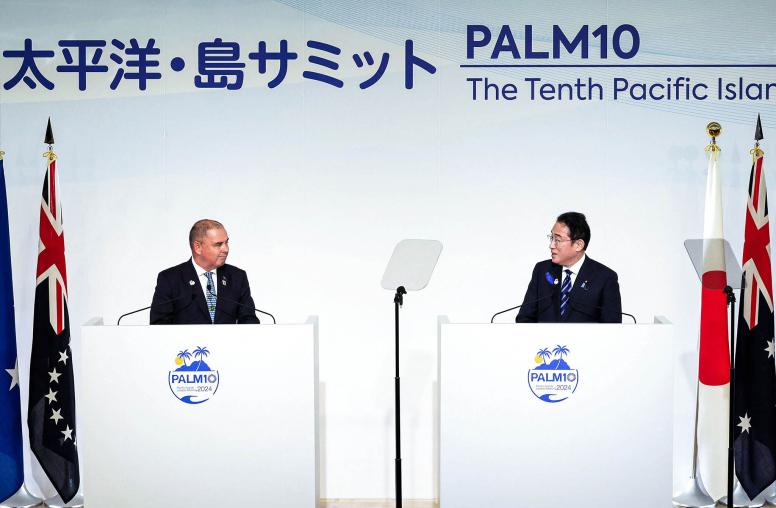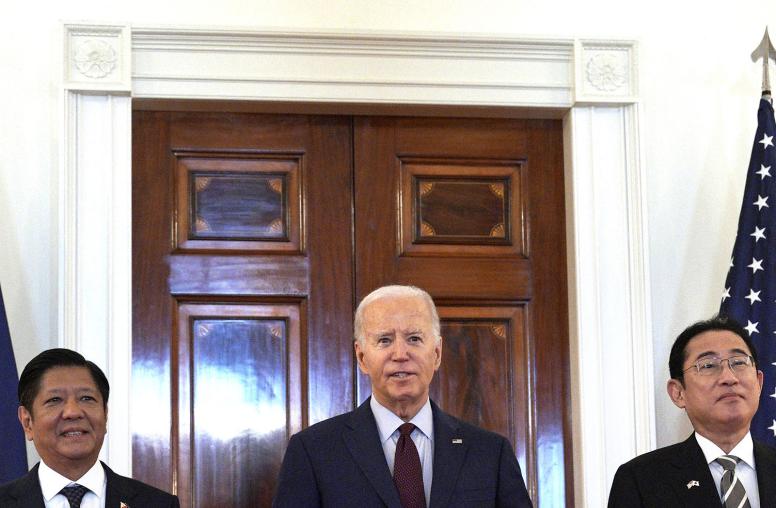Citizenship Policy Reform in Japan as a Path to Cooperation with South Korea
Reforms aimed at descendants of colonial-era migrants would encourage naturalization and diversify the electorate and political leadership in Japan.
Over the past two decades, increasingly vocal and visible anti-immigrant and, specifically, anti-Korean sentiment has risen in Japan’s public sphere. Internet chat rooms such as “2-channel” have become forums for anonymous posts expressing anti-foreign, anti-Korean and anti-Chinese sentiment. Similarly, anti-immigrant — and specifically anti-Korean — sentiment on the streets has increased through such organizations as the zaitoku-kai (the “Citizens group that will not condone special rights for Koreans in Japan”).

Anti-immigrant, and especially anti-Korean, sentiment in Japan is not a backlash to open immigration policies enacted in the postwar era as expressed in anti-immigrant movements that have become the mainstay of the far right throughout Europe. Rather, it is a reflection of the unresolved contradictions that stem from Japan’s imperial expansion, postwar decolonization and enduring tensions with postcolonial South and North Korea. Groups such as the zaitoku-kai have neither called for more restrictive immigration policies nor the expulsion of recently arrived immigrants. On the contrary, their primary targets have been descendants of colonial-era migrants who occupy an ambiguous legal status between citizen and noncitizen in contemporary Japan. The so-called special privileges associated with this legal status continue to be a central source of anti-Korean mobilization among the far right in Japan. Reforms to Japan’s citizenship and immigration policies could help resolve this situation and may, paradoxically, create openings for greater cooperation between Japan and South Korea.
From Colonial Subjects to “Special Permanent Residents”
In contrast to former colonial powers in Europe, the largest population movements between Japanese colonies, most of them in neighboring countries, and the Japanese metropole came before the end of World War II. By 1945, more than 2 million colonial subjects from Korea and Taiwan had migrated to the Japanese archipelago, though not necessarily of their own volition. Japan’s post-imperial reconstruction as a procedurally democratic, homogenous nation-state during the U.S. occupation (1945–52) entailed closing the shrunken state’s borders, repatriating almost two-thirds of the former colonial subject population residing in Japan and reclassifying as aliens those who remained in Japan. This stood in contrast to post-imperial European states that opened their borders to former colonial subjects and affirmed their rights to citizenship during the process of decolonization. With the passage of the 1950 Nationality Act, which perpetuated the principle of patrilineal jus sanguinis — a rule that a child’s citizenship is determined by its parents’ citizenship — from the 1899 Meiji nationality law, the only path to Japanese citizenship for former colonial subjects newly reclassified as aliens was naturalization.
The reclassification of former colonial subjects to aliens was not a source of contention for the different stakeholders, including most Koreans in Japan. After all, foreign nationals — specifically Allied nationals — were leading the project of rebuilding postwar Japan. What mattered was what kind of alien status one held. Allied nationals during the U.S. occupation held rights and privileges that surpassed those of the defeated Japanese. Former colonial subjects, however, occupied a contingent status between “liberated nationals” and “enemy nationals” because of their prior service in the Japanese military during the Pacific War (whether or not it was compulsory). Assuming that all former colonial subjects would eventually repatriate, occupation authorities left open the question of their legal status, which gave rise to the derogatory Japanese term daisangokujin (“third-country peoples”).
The approximately 600,000 Koreans who continued to reside in Japan after the mass repatriation of the occupation held an ambiguous legal status for decades thereafter. Their reclassification as aliens during the early postwar period made them nationals of Chōsen, which was the Japanese term used to refer to Korea during the colonial period. But because a unified Chōsen no longer existed, those with Chōsen-seki (Chōsen nationality) were stateless. Following the establishment of the Democratic People’s Republic of Korea in 1948, Chōsen-seki holders became, by default, de facto North Korean nationals based on North Korea’s retention of Chōsen (Chosŏn in Korean) as its official name. Since Japan does not officially recognize North Korea as a legitimate state, Chōsen-seki holders remain stateless.
While the Republic of Korea (ROK, or South Korea) urged Koreans to register as South Korean (Kankoku) nationals through its representative organization in Japan, Mindan, only about a third of the Korean population in Japan chose to do so in the first decade after South Korea’s establishment in 1948. Although over 90% of Japan’s Korean population at the time originated from southern Korea, South Korea was then a poverty-stricken, unstable country with a dictatorial regime. North Korea, by contrast, offered financial support and educational opportunities to the Korean community in Japan through its representative organization, Ch’ongnyŏn (Chōsen Sōren), which provided a type of safe haven complete with Korean ethnic schools, governing bodies and financial institutions.
South Korea’s relationship with the Korean community in Japan changed dramatically with the ratification of the 1965 South Korea-Japan normalization treaty, which stabilized the status of colonial-era migrants and their descendants, provided that they had resided in Japan from before the end of the Pacific War, and applied for South Korean nationality by January 1971. By 1971, more than 350,000 Koreans acquired South Korean nationality, thus forming the majority in the community. (The number of South Koreans in Japan in 2021 was a little under 410,000, compared to approximately 26,300 Chōsen-seki holders.) Treaty-based permanent residency (kyotei eijū) eventually formed the basis for the “special permanent resident” (tokubetsu eijūsha) category that was established in 1990 to cover all colonial-era migrants and their descendants, including those who hold Chōsen-seki.
While South Korea provided generous benefits to resident Koreans in Japan, including exemption from South Korea’s mandatory military service, Japan offered no such special privileges. However, permanent residency status provided protection from arbitrary deportation and facilitated making political claims to the Japanese and Korean states. To the dismay of the Park Chung-hee administration that sought to create loyal South Korean overseas citizens in Japan, Japan’s Korean community become a hotbed for South Korea’s democratization movement. Unlike their counterparts in South Korea, democratization activists in Japan publicized the Park regime’s human rights abuses and waged protests against the regime without fear of persecution. The institutionalization of permanent residency also gave rise to a new generation of activists who mobilized what I describe elsewhere as a noncitizen civil rights movement from the late 1960s that successfully made claims to a wide array of citizenship rights for Korean residents in Japan. These range from employment rights in the public sector to equal access to unemployment assistance, public housing, child allowances and national health insurance to the institution of “multicultural” education in public school curricula in some local districts.
Why Citizenship Policy Reform?
The combination of strict descent-based citizenship policies, generous institutionalized rights for permanent residents and high volumes of colonial-era migration has produced an anomalous outcome: Japan has the distinction of being one of the only wealthy democracies with six generations of foreign residents. Unlike European countries with descent-based citizenship policies such as Germany and Italy that automatically grant citizenship to immigrant descendants from the third generation, Japan applies descent indefinitely. Formal naturalization remains the only path to Japanese citizenship for all foreign residents in contemporary Japan (except for those with Japanese parentage) regardless of birthplace, degree of cultural assimilation or generations removed from immigrant ancestry. While the foreign community has grown to over 2.76 million in 2021, colonial-era migrants and their descendants continue to make up one of the largest foreign populations in Japan. Moreover, annual naturalization rates have not exceeded 1% since the government began to keep records in 1952.
On the one hand, this combination of factors has institutionalized one of the most generous systems for extending citizenship rights (short of local and national voting rights) and social welfare benefits to permanent foreign residents in the world. On the other hand, it has discouraged many foreign residents from naturalizing. Long linked to imperial Japan’s policy of forced assimilation (dōka), naturalization continues to be associated with ethnocultural assimilation in contemporary Japan even among non-Korean immigrants. As described by a participant in my Chinese focus group interview in Japan, “It [kika, or naturalization] means that if you acquire Japanese nationality, you must become Japanese on the inside and outside.”
The indefinite exclusion of long-term, often native-born, foreign residents from the rights and duties of full citizenship, including local and national voting rights, is untenable for all liberal democracies. While the rights extended to permanent residents in Japan provide a short-term solution to this dilemma, we can expect that the population of denizens, who are neither fully foreign nor legally Japanese (“hi-nihonjin” or “not Japanese” as a resident Korean focus group participant put it), will multiply over time given the low rates of naturalization among Korean and non-Korean foreign residents in Japan. Permanent residents in Japan (both “special” and “ordinary” permanent residents) made up almost 40% of the total foreign community in 2021 at 1.1 million.
One potential bridge for addressing the irregularities associated with permanent residency status is to reform Japan’s citizenship laws to introduce dual nationality (thus joining 75% of countries in the world that permit it) and make citizenship acquisition automatic for immigrant descendants from the third generation.
First, it will encourage naturalization and diversify the meaning of Japanese citizenship. Research on Latin American immigrants in the United States suggests that the requirement to renounce formal membership in one’s country of origin is a significant disincentive for naturalization and that dual citizenship encourages both immigrant political participation in their country of residence and positive intergroup relations. And citizenship policy reforms would remove the stigma associated with naturalization by making Japanese citizenship an automatic right for most descendants of colonial-era migrants and an empowering choice for others.
Second, incorporating Korean residents as full citizens with voting rights and the right to run for office would diversify the Japanese electorate and Japan’s political leadership, which could then help temper the zero-sum approach to the so-called history issues that plague Japan-South Korea relations. While many conservatives in Japan’s political leadership would not welcome such a move, it could contribute to a more robust political opposition and narrow the gap between an elite political system dominated by one party and increasingly plural grassroots politics in contemporary Japan.
Finally, citizenship policy reform in Japan may provide an opportunity for greater cooperation between Japan and South Korea on their common demographic challenges. With South Korea’s institutionalization of dual nationality in 2010, Japan and South Korea have the potential to set the foundation for building regional institutions to share best practices and contribute to migration interdependence in East Asia.
Erin Aeran Chung is the Charles D. Miller associate professor of East Asian politics and director of undergraduate studies in the Department of Political Science at Johns Hopkins University. She is the author of Immigration and Citizenship in Japan and Immigrant Incorporation in East Asian Democracies.



